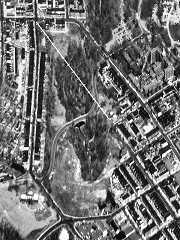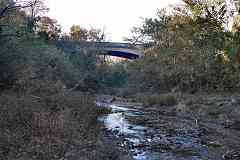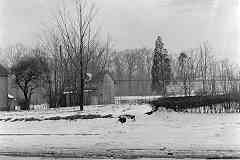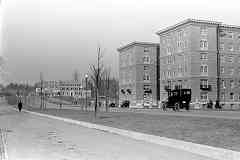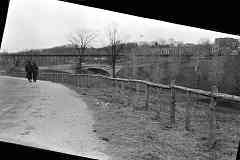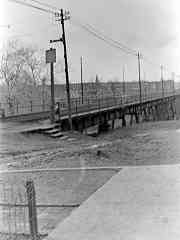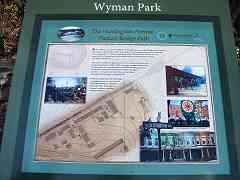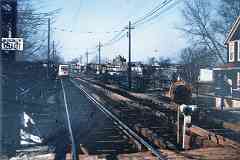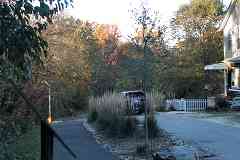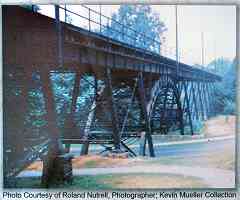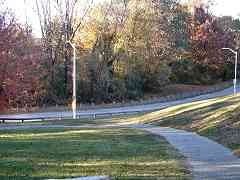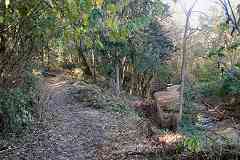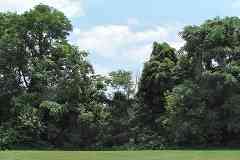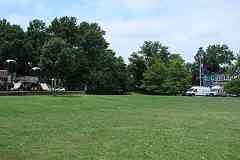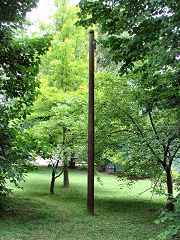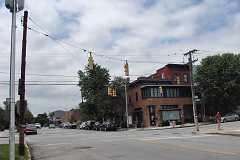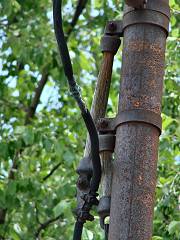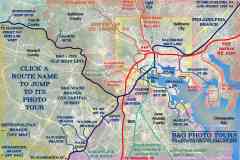|
Since few photos exist that include both Charles Street and the viaduct,
we have to rely on others to provide clues. This one looks into JHU's
Homewood Campus from a bit north of 34th Street.
The arrow points to a barn, Merrick Barn, which would be a candidate for
the barn in the puzzling 1914 photo except for the problematic detail that
Merrick's is a masonry structure. As of 2022, the barn is home to a theater
program run by JHU alum John Astin of The Addams Family fame. Homewood
Villa, at the above photo's upper right edge, bears only a passing resemblance
to the Addams Family mansion.
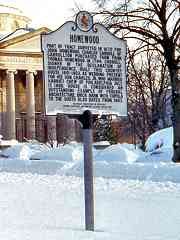 Though the main photo does not reach Stony Run, it does illustrate that
the US Marine Hospital (top), which existed at the time of the puzzling
1914 photo, would block the view had that photo been snapped from here.
Though the main photo does not reach Stony Run, it does illustrate that
the US Marine Hospital (top), which existed at the time of the puzzling
1914 photo, would block the view had that photo been snapped from here.
The nearby former residence of Charles Carroll, Jr., Homewood House, is a
museum now. Many assume it lent its name to JHU's Homewood Campus, however,
the earliest name reference is to a person: per the historical marker at
right, the land was surveyed during 1670 for John Homewood. This marker is
no longer extant.
Links:
1914,
Merrick Barn ~1920,
Homewood Villa
|


